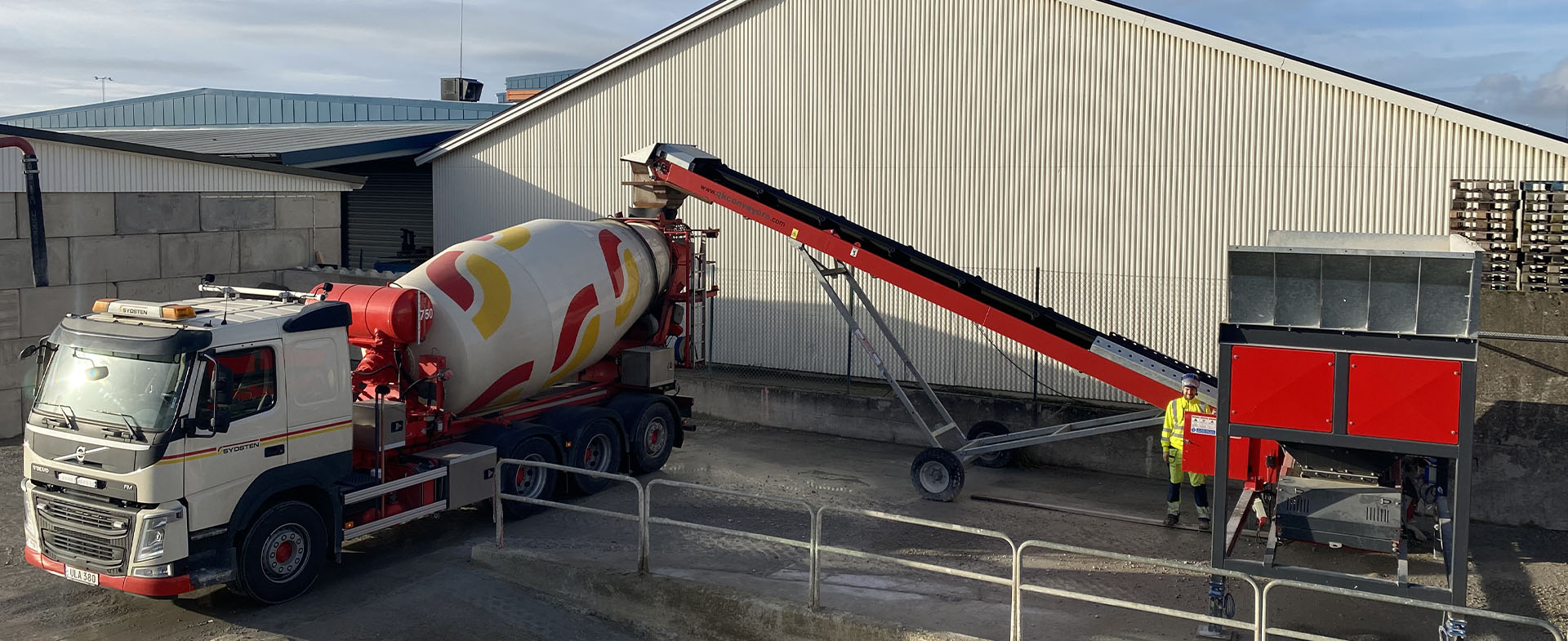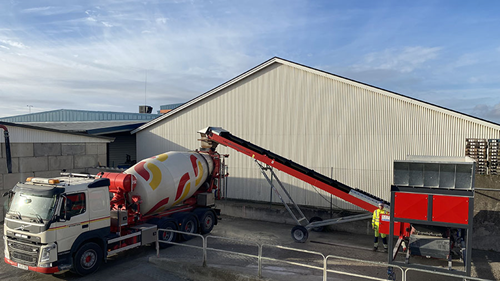

Research & Development
/
10/16/2024
A thesis on Re-Con Zero Dry Washing aggregates at Halmstad University (Sweden)
Exploring sustainable concrete with recycled aggregates: a university thesis on RE-CON ZERO DRY WASHING
Two final-year students from Halmstad University, Osama and Ahmad Alfara, conducted a study on the use of recycled aggregates in concrete, specifically those produced through the Re-Con Zero Dry Washing process. Their thesis analyzed key properties such as water absorption, density, and compressive strength of concrete made with these aggregates, derived from recycled concrete and truck washout slurry. The research contributes to the advancement of circular concrete production and emphasizes the importance of managing water absorption for optimal mix design.
Last May, two final-year students at Halmstad University (Sweden) finished their Bachelor thesis study on the use of reclaimed aggregates in concrete production. Osama Alfara and Ahmad Alfara investigated the concrete produced at the nearby RE-CON DRY WASHING facility of the concrete manufacturer Sydsten in Halmstad by testing properties such as water absorption of the aggregates and slump and compressive strength of concrete made using these recycled aggregates. RE-CON ZERO EVO DRY WASHING aggregates are produced from fresh returned concrete treated with RE-CON ZERO EVO. These aggregates are then used in THE RE-CON DRY WASHING process where they absorb slurry from empty, dirty trucks. The trucks are dry-washed and therefore need almost no water to be cleaned at the end of the day. Since the process is cyclical, the aggregates can be re-used 10-15 times and each cycle will absorb slurry from the trucks and transform it into a dry aggregate.

The team that took part in the research project. From left to right: Osama Alfara, student, Philip Fridén from Fridéns ConcreteTech AB (a concrete consultant and university supervisor), and Ahmad Alfara, student.
As mentioned in the abstract of the thesis, the study explores the use of RE-CON ZERO EVO aggregates (which they called “RCZ aggregates”), a material made from recycled concrete and a two-component powder product, as an alternative to traditional virgin aggregates in concrete production. The primary purpose of the study is to contribute to a more sustainable and circular concrete industry, where leftover concrete does not become a waste problem but a valuable resource. The study aims to fill a knowledge gap regarding how RCZ-aggregates impact the properties of fresh and hardened concrete. The study investigates whether RCZ-aggregates can match the performance of traditional aggregates with respect to key concrete properties such as density, water absorption and other mechanical properties, such as slump, air content and compressive strength. Experimental methods included tests to compare concrete mixes containing traditional aggregates with mixes containing RCZ-aggregates. These tests measured the density and water absorption of RCZ-aggregates, as well as slump and air content at different times (0, 30, and 60 minutes) and compressive strength at various curing times (1, 7, and 28 days) for all mixes. The results from these tests showed that concrete made with RCZ-aggregates generally had higher water absorption and lower density compared to traditional mixes. Despite these material-induced differences, the concrete with RCZ-aggregates achieved compressive strength values that were similarly within the range of a normally distributed material at all tested times. This demonstrates that RCZ-aggregates are considered suitable in terms of compressive strength.
The conclusions from the study underline that RCZ-aggregates, made from residual concrete, are a fully functioning alternative to virgin aggregates in concrete, with good compressive strength. The study showed that it is important to monitor the water absorption of the RE-CON ZERO EVO aggregates when used as recycled aggregates in new concrete. Water absorptions is a parameter that greatly effects the workability retention of the concrete mix design.

The RE-CON DRY WASHING process is used to absorb slurry from dirty trucks. Osama and Ahmed Alfara’s master thesis focused on aggregates made using this method.
“I was impressed by the work of Ahmad and Osama, and also by the experienced guidance they got from Philip”, said Sven-Henrik Norman, Mapei Corporate Product Manager for the RE-CON line. The detailed study of Osama and Ahmad has given us bigger insight in how the aggregate properties change from newly produced by RE-CON ZERO EVO to the time when they are saturated with truck washout slurry and ready for recycling in new concrete. With this knowledge, it is much easier to predict the moisture absorption and give recommendations on the mix design. For example by adding RE-CON AGG absorption inhibitor in the admixture mix.














